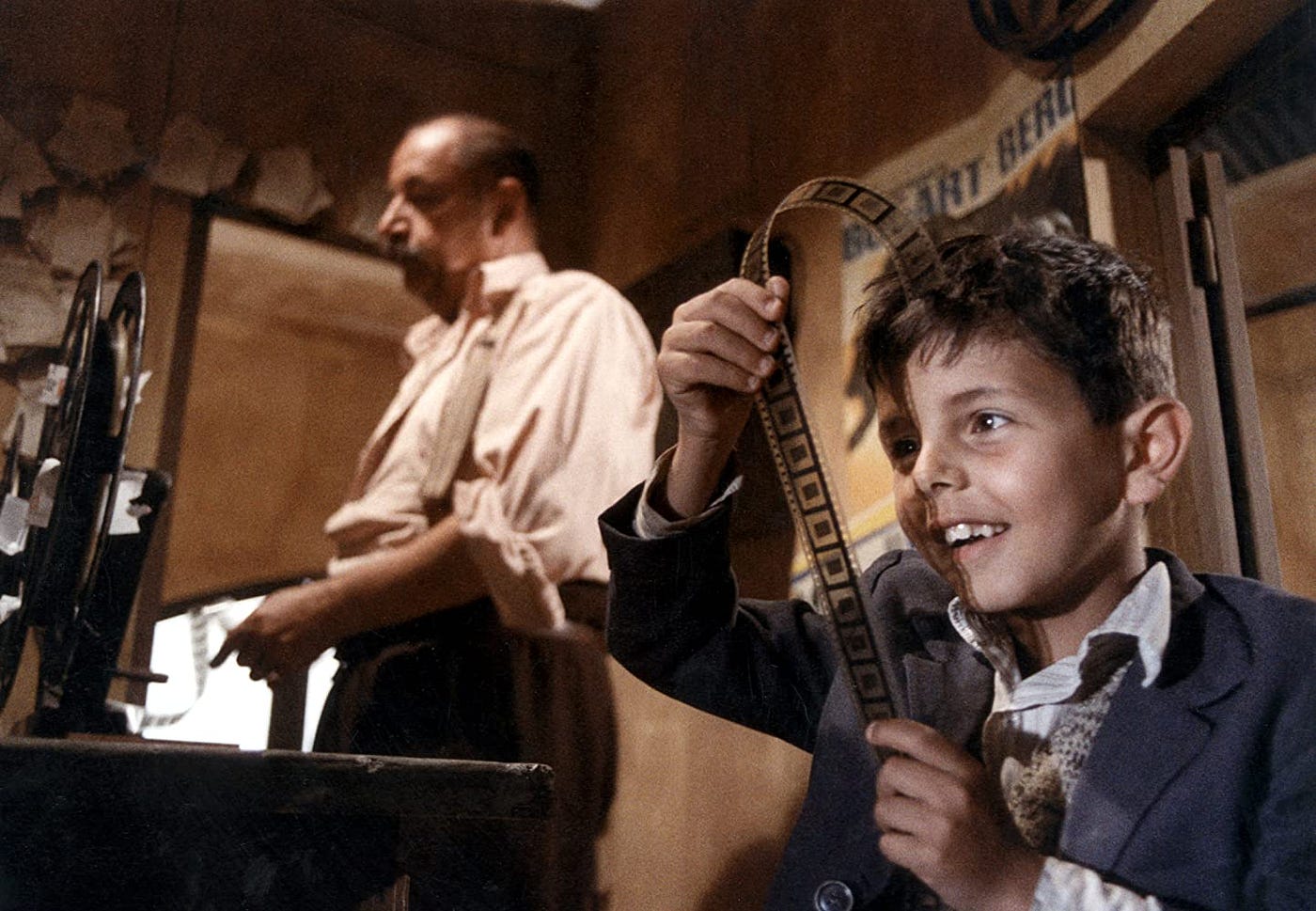‘Cinema Paradiso,’ directed by Giuseppe Tornatore, stands as an enduring celebration of cinema’s magical influence. Produced in 1988, this Italian masterpiece has etched its legacy into the hearts of global audiences, resonating far beyond its time and place of origin. At its core, ‘Cinema Paradiso’ is more than a nostalgic coming-of-age story; it is a profound homage to the art of filmmaking, emphasizing cinema’s power to shape lives, evoke emotion, and encapsulate memories.
The Metafilmic Structure: Cinema as Character and Catalyst
Central to ‘Cinema Paradiso’ is the famed projectionist, Alfredo, and his pupil, Salvatore, known as Toto. The narrative traverses several decades, with the Cinema Paradiso theater acting as both a literal and metaphorical heart of the town. Rather than serving as mere backdrop, the cinema itself emerges as a character, integral to the community and the protagonist’s identity.
The theater becomes a place of gathering where societal boundaries dissolve. In scenes both raucous and intimate, villagers from disparate backgrounds congregate, united in laughter, tears, and collective awe before the flickering silver screen. Through this, Tornatore underscores the communal, unifying prowess of film, transforming viewing into a ritual that transcends generational and social divides.
Film as Memory: The Emotional Core of Nostalgia
‘Cinema Paradiso‘ meticulously weaves memory and longing, employing the conventions of cinema to evoke nostalgia not only for Toto but also for the audience. From the opening sequences that reveal Salvatore as an accomplished filmmaker haunted by his past, to the recurring motif of old film reels and celluloid, the act of remembering becomes synonymous with cinematic watching. The film’s temporal shifts—between Toto’s childhood, adolescence, and adulthood—mirror the way cinema often replays and reframes moments, preserving them against the erosions of time.
A pivotal example is the film’s closing montage, a collection of censored romantic scenes Alfredo had preserved for Toto. This montage operates as an artistic statement; it is both a gift and an act of reclamation, restoring lost kisses and passion to public memory. Such scenes reinforce film as a vessel for emotion that survives even when physical spaces like the cinema itself fade away or are destroyed.
Technical Homage: Crafting a Lyrical Cinematic Language
Technically, ‘Cinema Paradiso’ is informed by and reverent of classic film idioms. Tornatore imbues the visual storytelling with elements reminiscent of Italian neorealism, employing naturalistic performances and authentic settings. The technical craftsmanship—from Ennio Morricone’s lush, evocative score to the warm, sepia-toned cinematography—serves as a nod to cinema’s history and its profound sensory impact.
Moreover, the film-within-a-film motif permeates the narrative, referencing classics from directors like Visconti and Chaplin. Clips from these films appear on the Paradiso’s screen, offering both a visual education and an affectionate acknowledgment of the broader film canon. This intertextuality roots the story within cinema’s collective heritage, paying tribute to the artistry of filmmaking while inviting audiences to partake in a shared cultural memory.
Guidance and Sharing: The Duties of a Projectionist
One of the film’s richest layers is its meditation on mentorship and the transmission of cinematic love. Alfredo’s relationship with Toto exemplifies the passing of knowledge, passion, and appreciation for film. By teaching Toto the intricacies of projection—and, implicitly, the beauty of storytelling—Alfredo acts as both craftsman and philosopher. He imparts wisdom that extends beyond the technical, encouraging discovery, courage, and personal growth.
This dynamic mirrors the way film history itself is preserved and passed to new generations. Just as Toto inherits Alfredo’s passion and ultimately surpasses him, so too does cinematic tradition constantly renew itself through fresh eyes and evolving technologies.
Socio-Political Themes: Restriction and Freedom
The film also intricately explores themes of censorship. Alfredo is instructed by the town priest to delete scenes deemed improper, especially any depicting romance or sensuality. This recurring act of excision offers commentary on the ways institutions seek to control narrative and emotion, yet passion finds a way to reassert itself. The return of the excised scenes in the finale reveals cinema’s radical potential to preserve truth, feeling, and rebellious joy.
By highlighting such constraints—alongside the liberating collective experience of moviegoing—’Cinema Paradiso’ comments on film as both a reflection of society and a subtle force for cultural evolution. The act of watching, it suggests, may be transformative, offering glimpses of alternate worlds and emotional truths otherwise inaccessible.
Global Impact and Heritage
The global response to ‘Cinema Paradiso’ highlights its message that resonates with everyone. The movie received significant praise, earning the Academy Award for Best Foreign Language Film in 1990 and the Grand Prix at the Cannes Film Festival. Its influence can be seen in subsequent films; filmmakers like Alfonso Cuarón mention it as an inspiration, and its format is mirrored in movies that delve into themes of memory, nostalgia, and the transformative nature of art.
Through weaving personal tales with a broader story about the power of cinema to unite and heal, ‘Cinema Paradiso’ charms audiences from various cultures and ages. Its deep appreciation for films is more than just a theme; it is integral to its essence and composition, encouraging spectators worldwide to experience anew the charm of the cinema—the joy, the sorrow, and the brief moments of transcendence experienced together in the dark before the play of light and shadow.
The film thus endures as a multilayered tribute, not only to movies as art but to movies as communal ritual, sites of learning, and echoes of human longing. Through this affectionate and complex lens, ‘Cinema Paradiso’ becomes cinema’s own story: a living archive of dreams, desires, and the power of visual storytelling itself.





:max_bytes(150000):strip_icc():focal(739x450:741x452)/Jane-Fonda-Aging-021925-tout-f137f9574daa4038ad78a8269bfdcf9a.jpg)